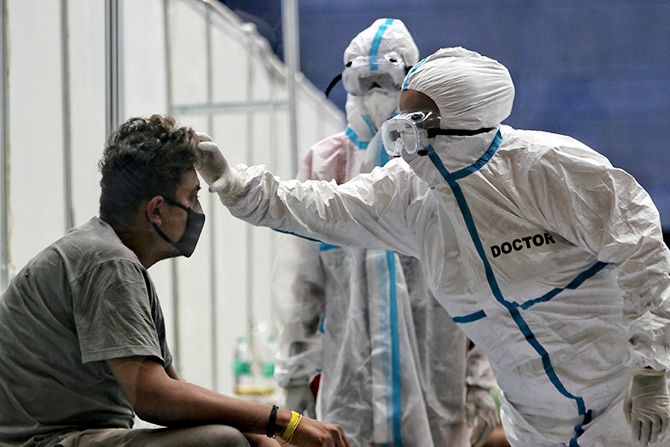The medical devices, which have been in high demand during the Covid-19 pandemic, will now see a drop in prices, as the earlier margins were up to 709 per cent for some of these products.
India’s pharmaceutical pricing regulator has capped trade margins for essential medical devices such as pulse oximeter, blood pressure monitors, nebulisers, digital thermometers, glucometers, etc, at 70 per cent.
These devices, which have been in high demand during the Covid-19 pandemic, will now see a drop in prices, as the earlier margins were up to 709 per cent for some of these products, the regulator noted.
The revised prices will come into effect from July 20, the National Pharmaceutical Pricing Authority (NPPA) has said, adding that the capped trade margins will remain in force up to January 31, 2022, or until further orders, whichever is earlier.
Pulse oximeter demand has risen manifold during the pandemic, and manufacturers like Morepen Laboratories have announced plans to ramp up capacities for devices such as oxygen concentrators 10-fold, while they aim to double the production of pulse oximeters.
The NPPA invoked paragraph 19 of the Drugs (Prices Control) Order (DPCO), 2013, to fix trade margins and directed manufacturers to fix their retail price based on the price at the first point of sale of product or the price to the stockist. The NPPA said it invoked provisions of Para 19 of the DPCO in ‘public interest’ to regulate the price of these five devices under the ‘Trade Margin Rationalisation Approach’.
Manufacturers, who are selling at a price which assumes a higher trade margin than what is capped now, will have to revise prices downwards and the NPPA has asked the manufacturers for a price list and a copy to state drug controllers and dealers by July 20. The new maximum retail price (MRP) will be according to the fixed trade margin.
Trade margin is basically the difference between the price at which a manufacturer sells the device or product to a distributor or stockist (trade) and the price paid by the end consumer (retail price).
Every retailer, dealer, hospital and institution will have to display the price list and the supplementary price list, as furnished by the manufacturer, on a conspicuous part of the business premises in a manner so as to be easily accessible to any person wishing to consult the same.
Moreover, any manufacturer found not complying will be “liable to deposit the overcharged amount, along with 15 per cent interest pa from the date of increase in price, in addition to penalty up to 100 per cent of the overcharged amount under the provisions of the Drugs (Prices Control) Order, 2013 read with Essential Commodities Act, 1955,” the NPPA said. The pricing regulator said it had collected data from manufacturers, marketers, importers, and noted that the margins ranged up to 709 per cent.
The local industry, however, is not happy with the move, which they feel favours importers.
“Trade margins need to be rationalised but from the first point of sales, which is when GST is charged initially — in case of imports on imported landed prices and in case of domestic industry based on ex-factory discounted prices. On many medical devices, the trade margins over import landed prices will be found to be irrationally high at 10-20 times, if investigated,” said Rajiv Nath, forum coordinator of the Association of Indian Medical Device Industry.
“We had been seeking the MRP to be capped at 2-4 times the imported products’ landed price, which is the first point of sales and not the price to distributor, which can be the second point of sales if the government wishes to protect consumers while seeking to arrest the increasing imports bill, which crossed Rs 45,000 crore last year,” Nath said.
NPPA said the Drugs Controller General of India (DCGI) and Director General of Health Service (DGHS) were in agreement that medical devices are essential for Covid management.
Source: Read Full Article


